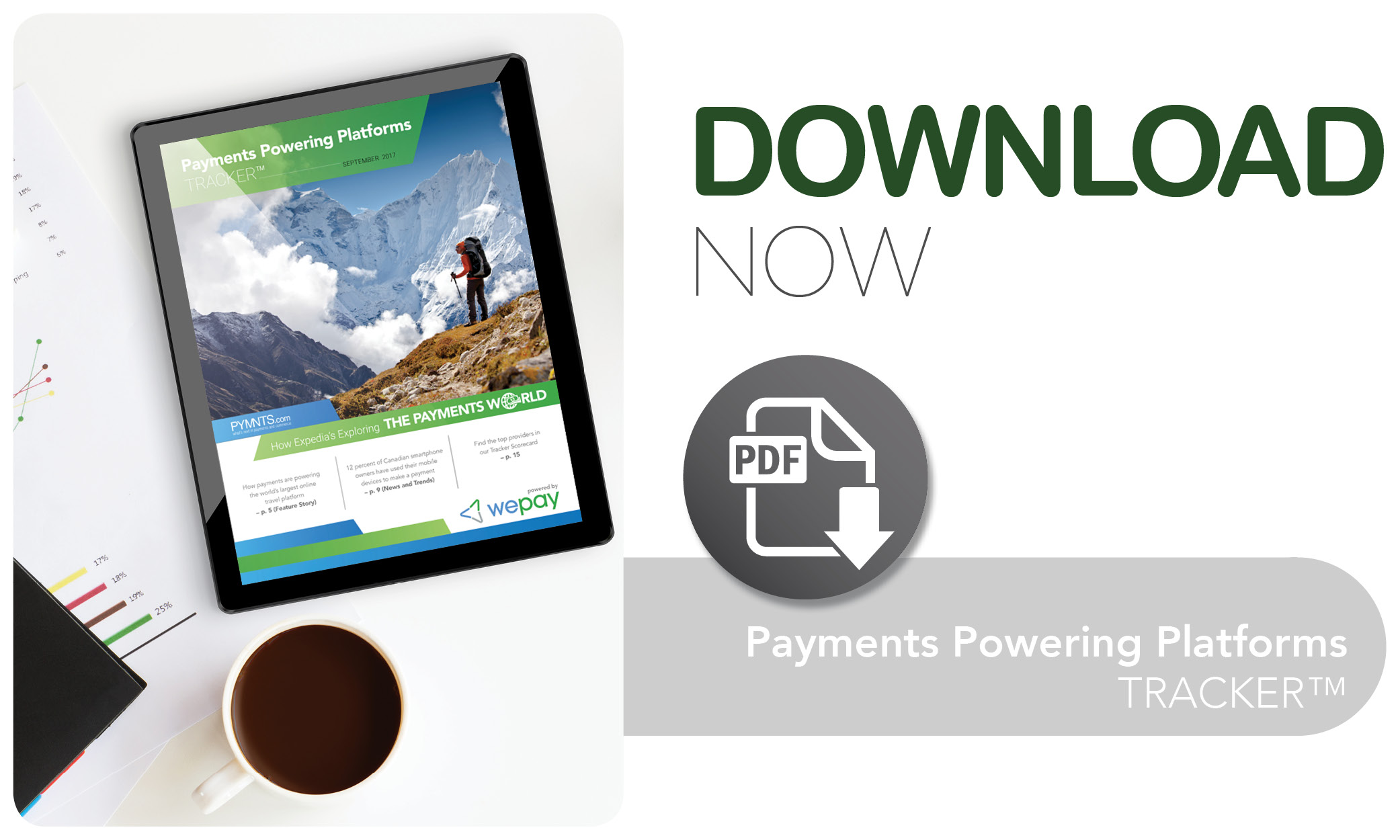Expedia Travels The Wide World Of Payments

Travel now, pay later? In this month’s PYMNTS Payments Powering Platforms Tracker, powered by WePay, Wilson Wang, director of checkout and payment products for online travel platform Expedia, explains why the company is doing everything from offering payment plans to accepting foreign currency in an attempt to make travel payments as painless as possible for its customers and its hotel and airline partners. Find that, along with headlines and rankings of 72 providers, inside the hot-off-the-presses Tracker.
When it comes to booking online travel, one can start out with a broad or narrow search depending on flexibility. It’s all about options, and — from choosing a preferred airline, travel time, number of stops and hotel chain, to deciding between more leg room or no leg room — travelers have lots of choices.
Once the itinerary is chosen, though, the payment options aren’t necessarily as plentiful. And, depending from where in the world one is booking and in what originating currency, frictions can lead to the traveling equivalent of an aborted takeoff.
According to research from the PYMNTS.com X-Border Payments Optimization Index, most of the top 10 percent of international merchants consistently offer pricing and payments in at least six different currencies. That’s because other study findings indicate enabling consumers to pay in their native currency is one of the most important features in motivating cross-border purchases, with one-third of surveyed consumers saying the option makes them more likely to shop across borders.
While having the capability to accept cross-border transactions is important for many businesses in the modern era of online shopping and global shipping, Wilson Wang, director of global checkout and payment products for online travel platform Expedia, said it’s even more crucial for a company specializing in global travel. In a recent interview, Wang told PYMNTS the company has learned firsthand how important native currencies are to customers — and how critical those currencies are to the company’s business model.
“We really want to be able to offer a flexible solution, because we want to work with travelers around the globe, however they want to pay for travel,” Wang said. “We know that offering those flexible solutions and providing prices in different currencies is hugely important for our customers who are traveling from all over.”
But, as it turns out, it isn’t just currencies. Wang said to find success — and grow from an internet startup to the world’s largest online travel company processing more than $72 billion in travel payments as of 2016 — the platform had to accept payments however Expedia’s consumers preferred to make them. That made different currencies, deferred payments and new payment methods like buy buttons equally important.
Letting customers pay how they want
As part of Expedia’s efforts to offer an array of payment options, the company introduced the Expedia Traveler Preference program in 2012, allowing guests to pay for trips at the end of their stays rather than at the time of booking. Wang said the program was designed to give customers more options for how to fund their travels. While many customers preferred to pre-pay for a trip, others wanted to be able to pay after the experience was over.
The program was popular among consumers, Wang said, and the company has since expanded it, offering additional payment and financing options over the last few years. Most recently, that included a 2016 partnership with Affirm, a FinTech providing merchants with online lending and financing programs. The program enables customers to pay for hotel stays in installments through Affirm financing.
The option received positive feedback from customers after its rollout, and the two companies extended their agreement. The Affirm financing program has since been widened to Expedia customers shopping for flights and travel packages, a booking option that typically includes a combination of flights, hotels and other related purchases like rental cars.
Wang said the program has found success because it offers customers the immediate gratification of making a purchase without the immediate consequence of receiving a bill. He noted the option has been particularly popular the company’s mobile app users, likely because it gives customers who would prefer not to share their payment details via a mobile device a different way to pay later.
“Since we launched this pay later option, it’s gained a lot [of] popularity over the years, both with customers and hoteliers,” Wang said. “It’s been especially popular among consumers on mobile platforms, interestingly, because those customers want a more immediate experience, but they often don’t want to make a payment on a mobile device due to security concerns. This lets them pay later in a way that feels more secure.”
Expedia’s Traveler Preference program underpins a combination of two revenue models which decide when and how payments are made to the hotels. The company’s Expedia Collect merchant model kicks in when a customer chooses to pay at the time of the booking. In these cases, Expedia charges the customer’s credit card and pays the hotel following the customer’s stay.
Under its agency revenue model, when customers choose to pay at the hotel — regardless of whether they made a deposit at the time of booking — Expedia receives a commission on the booking after the payment is received.
According to financial services and investment insights provider the Motley Fool, the company’s agency model represented 56 percent of its revenue as of Q2 2016, with merchant revenue accounting for 44 percent.
Adding new payment methods
Despite its history as a travel industry disruptor, Wang reported the company most often processes a fairly traditional payment type: credit cards. But that tide is slowly turning, and he noted the company is eager to adopt new payment methods under the umbrella of its payment flexibility philosophy.
To that end, Expedia recently partnered with Mastercard to add its buy button, Masterpass, as a rapid payment option. This allows customers to save time by paying with their Mastercard, without having to enter personal payment information.
Going forward, Wang said, the company plans to continue to explore new payment methods as they are introduced.
“Payment innovation is a huge area [in which] we’re interested, adding new currencies and payment methods, because it’s all about making the experience as enjoyable and easy as possible for consumers,” he explained. “They expect it to be very easy to book a vacation or some other kind of travel, and we want to provide a platform that offers that payment experience.”
Window seat with extra legroom, booked online and paid for, in full, in the future? Some might call that time travel.
……………..
To download the September edition of the PYMNTS Payments Powering Platforms Tracker™, powered by WePay, click the button below.
The PYMNTS Payments Powering Platforms Tracker™, powered by WePay, serves as a monthly framework for providing coverage of the most recent news and trends in the space, along with a provider directory highlighting the key players — the companies contributing across the segments that comprise the payments-integrated platform ecosystem.

